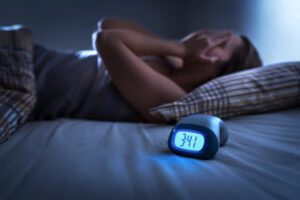
How Diagnoses of Major Depressive Disorder (MDD) and PTSD Can Help Argue and Support Your VA Claim for Disability Benefits.
Many veterans returning home grapple with more than “just PTSD.” They frequently struggle with co-existing mental health disorders, including depression.
The most widely known mental health problems veterans and active duty service members face are PTSD and major depressive disorder.
According to a 2020 U.S. Department of Defense study, “posttraumatic stress disorder and major depressive disorder commonly co-occur in combat veterans, and this comorbidity has been associated with higher levels of distress and more social and economic costs compared to one disorder alone.”
While this is a devastating statement, these details become valuable factors for veterans fighting for fair disability benefits. When diagnosed with PTSD and MDD, this can present additional ways for you to win maximum benefits.
Call or text 800-562-9830 or complete a Free Case Evaluation form
What Is Major Depressive Disorder?
A common mental disorder, MDD is also called clinical depression. The condition can bring about a wide range of emotional and physical problems. It affects how you feel, think, and behave. Many people experience difficulties with everyday activities or feel that life isn’t worth living.
Symptoms of MDD Include:
- depressed mood, sadness, hopelessness
- loss of interest or pleasure in regular activities, sports, or hobbies
- lack of energy, feeling fatigued
- feeling that moving takes great effort
- feelings of guilt or low self-worth
- disturbed sleep or sleeping too much
- loss of appetite, weight loss
- eating more than usual, weight gain
- anxiety, nervousness, agitation
- psychomotor retardation (slow thinking or slow body movements)
- poor concentration, trouble making decisions and remembering things
- thoughts of suicide, death, or suicide attempts, or suicide
In addition to the immediate symptoms of depression, MDD leads to inferior quality of life, loss of employment, proneness to obesity, smoking more often, drinking more alcohol or using drugs, relationship conflicts, and suicidal ideation with a high risk of death from suicide or other causes.
For a free legal consultation, call 800-562-9830
What Are the VA’s Criteria for Diagnosing Major Depressive Disorder?
The table below represents the 2022 VA and DoD guidelines and the basis for MDD diagnosis:
| Symptom | MDD Diagnosis is based on the list of symptoms below. Symptom 1, 2, or both must be present. A minimum of 5 of 9 symptoms overall are required. Symptoms must persist for at least two weeks. |
| 1 | Depressed mood nearly every day for most of the day, based on self-report or observation of others |
| 2 | Marked reduction or loss of interest or pleasure in every, or nearly all, activities for most of the day, principally on a daily basis |
| 3 | Significant non-dieting weight loss or weight gain (> 5% change in body weight) |
| 4 | Insomnia or hypersomnia nearly every day |
| 5 | Psychomotor agitation or retardation (should be observable by others) |
| 6 | Fatigue/loss of energy nearly every day |
| 7 | Feelings of worthlessness or excessive/inappropriate guilt (possibly delusional) nearly every day |
| 8 | Diminished cognitive function (reduced ability to think or concentrate, or indecisiveness) nearly every day |
| 9 | Recurrent thoughts of death and/or suicide, suicide planning, or a suicide attempt |
In addition, the VA lists the following Severe Major Depressive Disorder Symptoms:
- Active suicidal ideation with either intent or plan or suicide attempt
- Active homicidal ideation
- Psychotic symptoms
- Severe anorexic symptoms (including loss of weight that poses health risk)
- Inability to maintain ADLs (e.g., grooming, eating, catatonia)
How Does Major Depressive Disorder Differ from Depression?
Confusion between the two is understandable because people talk about major depressive disorder or clinical depression by simplifying it generally as “depression.”
The difference is that MDD is the most disabling type of depression. MDD persists daily for at least two weeks and involves more symptoms than a depressed mood or sadness alone.
Recovery may occur in a few weeks or after many months. But for others, major depressive disorder is a long-term illness. In about 20% to 30% of people, the symptoms never disappear entirely, and the patient forgets what feeling normal is like.
Major depressive disorder also co-occurs with other impairments such as traumatic brain injury, diabetes, high blood pressure, COPD and other lung diseases, chronic pain, and congestive heart failure.
How VA Rates Major Depressive Disorder and PTSD
All mental disorders (aside from eating disorders) are rated with the same criteria and rating schedule: 0%, 10%, 30%, 50%, 70%, or 100%. The VA’s General Rating Formula for Mental Disorders is here: (38 CFR § 4.130).
Since mental health conditions are evaluated using the same criteria, veterans with PTSD and depression will be given one combined disability rating.
VA’s Pyramiding Rule – Veterans Can’t Receive Compensation for the Same Symptoms Twice.
PTSD and depression share many symptoms. Under the VA’s “pyramiding” rule, evaluating the same disabling symptom under different diagnosed conditions is to be avoided. This ensures you are only rated for a symptom’s functional limitations once.
A VA rater is to look at the totality of the evidence in your claim to understand how all symptoms impact your social and occupational functioning and which diagnosed mental health disorders will be relevant to the claim.
For example, you experience panic attacks due to your PTSD and MDD. In that case, disability will only be rated for panic attacks under the diagnostic code for one of the two conditions.
If a question about which of two percentage ratings shall be used, the VA would generally assign the more favorable (higher) evaluation.
This leads to why, in many cases, you want to include all relevant symptoms and diagnoses in a mental disorder claim (and not limit yourself to just the one diagnosis): The more severe your symptoms are, the higher your VA disability rating will be.
A Caveat to the Pyramiding Rule.
The VA requires veterans to receive one rating that covers all mental health disorders unless separate, non-overlapping symptoms are involved.
This allows veterans the right to file separate claims and obtain separate disability ratings for more than one mental health disorder – but only on the condition that the VA is able to differentiate symptoms ascribed to each diagnosis.
To investigate this, the VA’s Mental Disorders Disability Benefits Questionnaire asks if it is possible to differentiate what symptom(s) are attributable to each diagnosis.
In other words, the pyramid rule is not breached when conditions do not result in rating the same symptomatology of a disability twice.
Is Your Major Depressive Disorder Secondary to PTSD?
When PTSD is the root cause of your service-connected major depressive disorder, in certain cases, MDD may be considered a secondary condition in your PTSD claim, adding value to your claim.
Keep in mind the above rules about pyramiding. Our attorneys will be happy to evaluate your situation to see whether these conditions apply to your situation.
Other Ways a Veteran with MDD and PTSD Can Win Benefits
Did the VA Deny Your claim for posttraumatic stress disorder?
PTSD can be a frustrating disability to prove without proper representation. Perhaps you’ve not been able to demonstrate the stressor event occurred. VA says the stressor didn’t happen, and there’s no way for you to prove it. With no stressor, you cannot claim benefits for PTSD.
Sometimes the answer is to redirect the focus and submit a mental disorder claim for major depressive disorder.
For veterans claiming VA disability benefits, the stressor rule for service connection is what distinguishes posttraumatic stress disorder from other mental health conditions. An in-service stressor is the traumatic event or incident that caused the veteran’s PTSD.
PTSD claims must
- Show a current diagnosis of posttraumatic stress disorder
- Identify an in-service stressor (the traumatic event or incident that caused your PTSD)
- Show a medical nexus that links your PTSD diagnosis to the in-service stressor (unless your PTSD is presumed to be connected to your service)
MDD claims must
- Show a current diagnosis of major depressive disorder
- Identify an in-service event (rather than a stressor)
- Show a medical nexus between the MDD and the in-service event
With MDD, you must prove your mental health disorder is the direct result of conditions that you encountered during active service (rather than any pre-existing issues). The event may have been in the line of duty, such as during combat, or it may have happened during your active duty but not related to your military service, such as separation from loved ones back home.
If the stressor is the weakest point of a PTSD claim, a veteran’s chances for any compensation at all is compromised. It’s time present your claim in a different light.
The VA would consider a new claim with fresh eyes where MDD is the primary mental disorder diagnosis. We may be able to refocus your situation on a new mental disorder claim stating you acquired major depressive disorder during your active service.
Ultimately, you want the maximum compensation you deserve for your service-connected mental disability, whether your claimed diagnosis is major depressive disorder or PTSD. MDD may well be the better route.
Let Us Help You Get the Benefits You Deserve
If your disability rating for major depressive disorder or PTSD was deficient or your claim was denied, do not give up the fight.
Marc Whitehead & Associates law firm handles disability claims for veterans across the U.S. with various mental health issues. Our VA-accredited lawyers are experienced with helping veterans in difficult situations make proper mental disorder disability claims for the highest possible VA ratings. We would be honored to do the same for you.
If you disagree with the VA’s decision, have questions about co-occurring major depressive disorder and PTSD, or want to submit a new disability claim, we can help immediately.
We welcome your call – (866) 860-9551 – to discuss your options and how we can assist.





